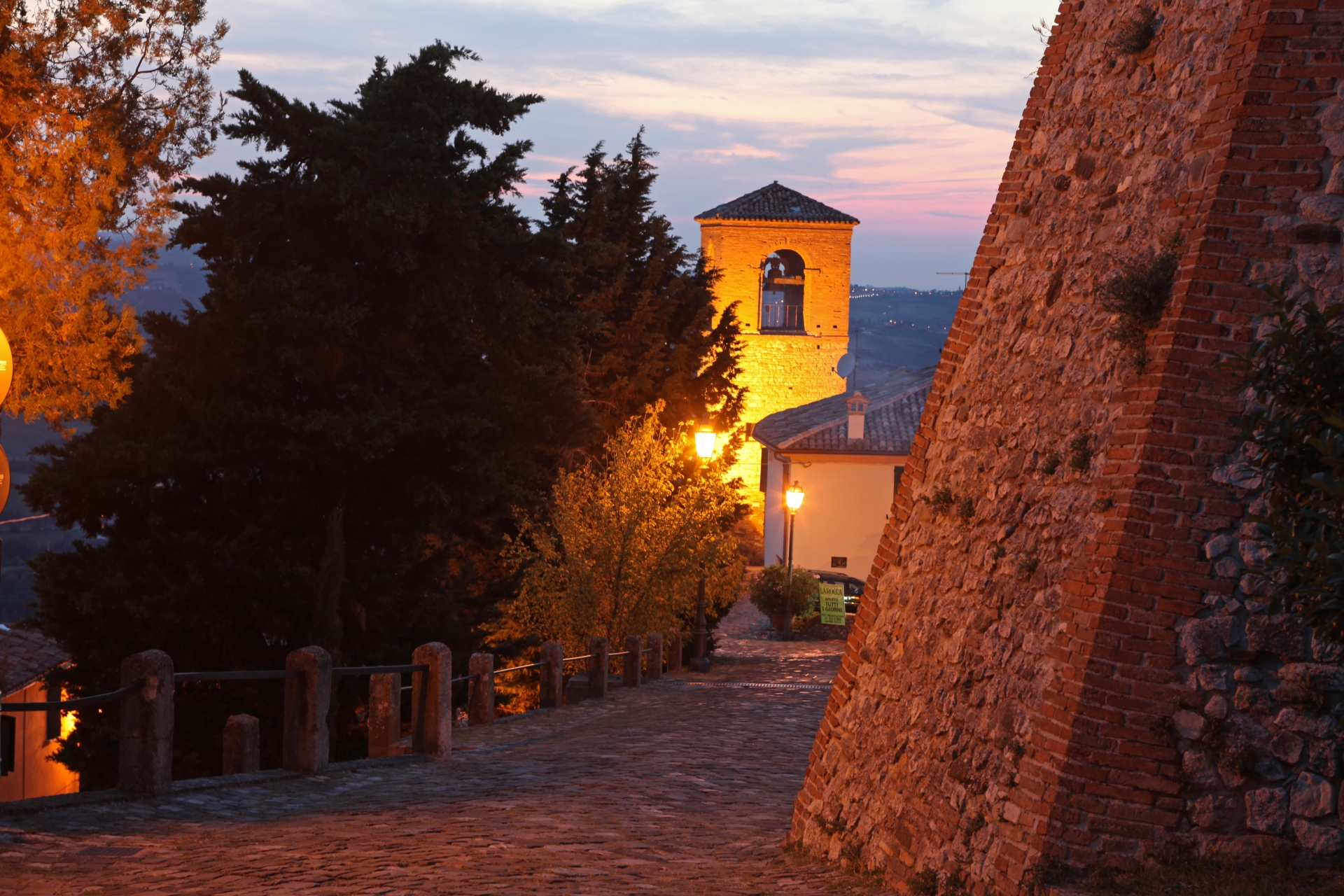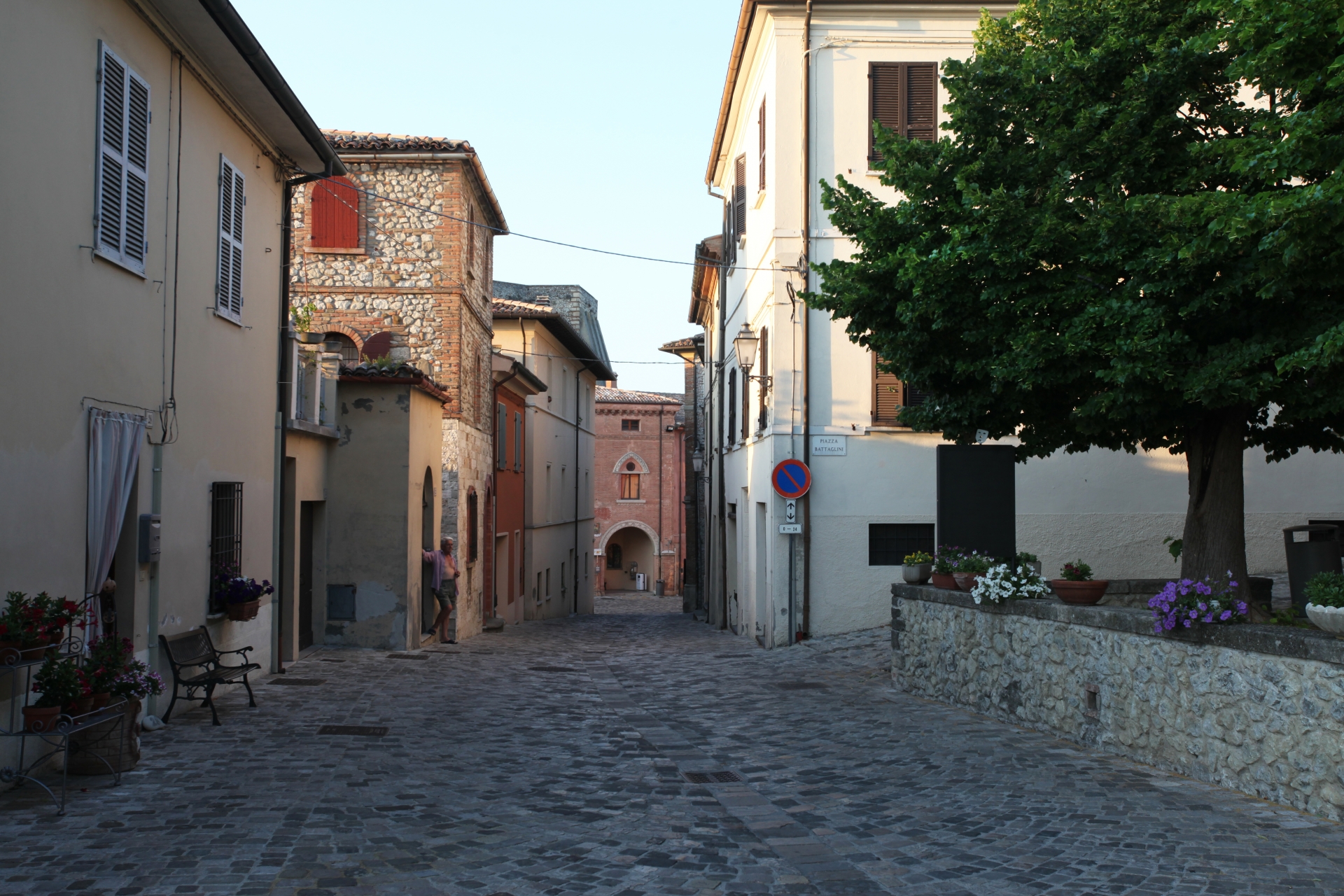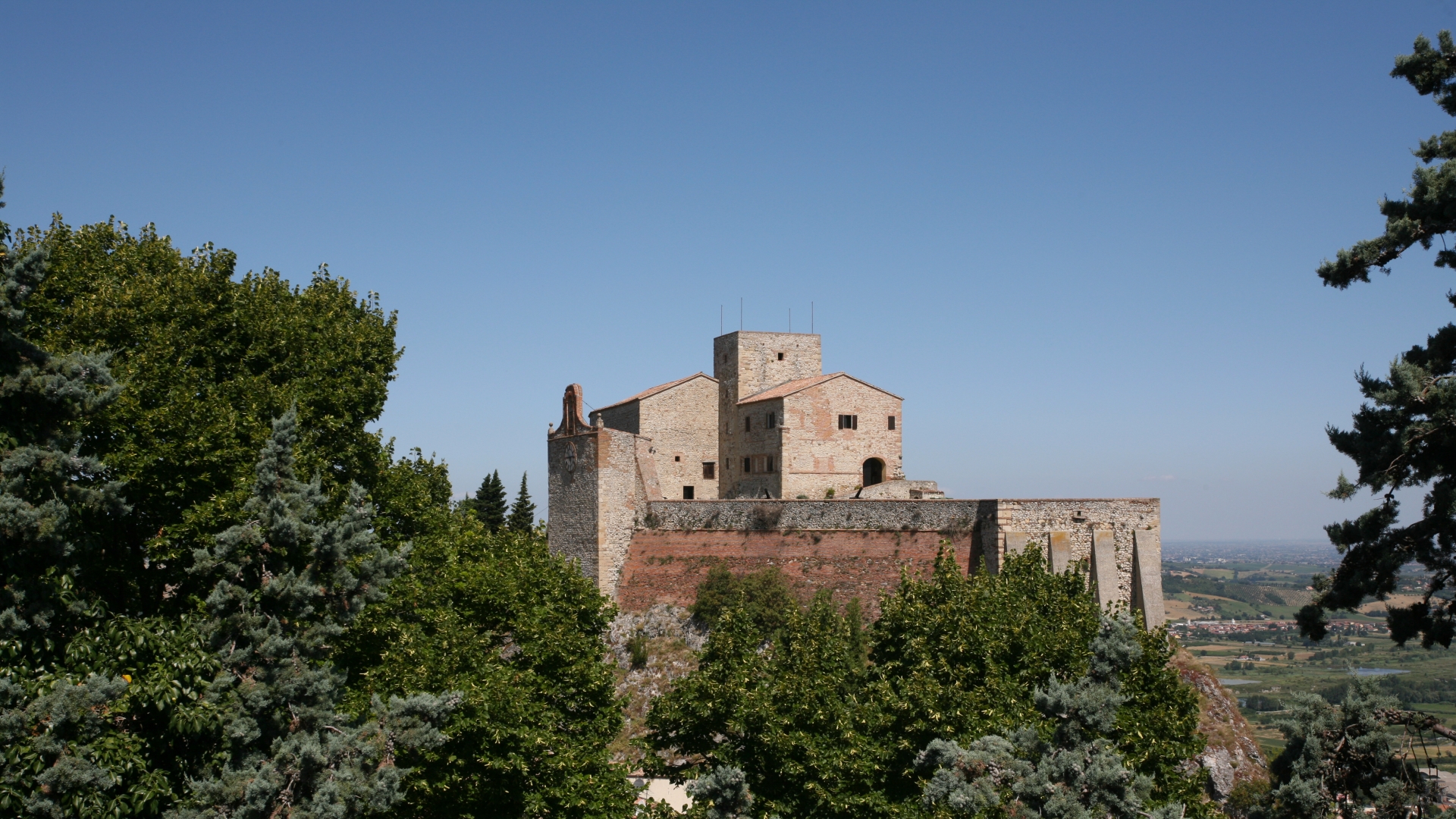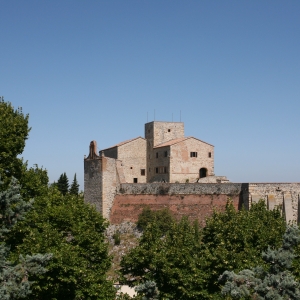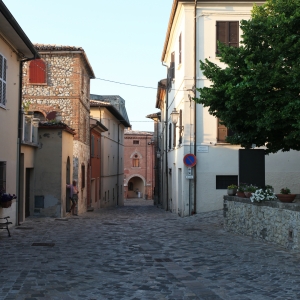Hamlet of Verucchio
Verucchio was awarded the Orange Flag by the Italian Touring Club and is also one of the most beautiful hamlets in Italy.
Once you enter this charming hamlet, you can admire the prestigious architecture and its mighty Fortress, which the Malatestas built, thus initiating the prestigious history of the family based on eventful and profitable conquests and alliances.
Mastin Vecchio (Old Mastiff) lived here, the centenary Malatesta who is considered one of the progenitors of the family, mentioned by Dante in the Divine Comedy.
For this reason, Verucchio is defined as the "Cradle of the Malatestas", evidence of the privileged link of the Seigneury with this castle which it owned for over three hundred years starting from 1100, a title that it vies for with Pennabilli which, as mentioned in the introductory pages, is proud of having given birth to the family.
The dominion of the Malatestas allowed for the consolidation of the defensive structures, the development of it as a housing function, expanding the village which was enriched with sacred buildings and civil works.
The medieval layout, which the stroll through the historic center highlights, confirms what a great part its Lords had in the growth of this place which, even in the following centuries, enjoyed development and prosperity which is today the foundation of its cultural and tourist vocation.
The Town Hall Building overlooks the center of Piazza Malatesta, which in 1895 replaced part of the older one called Ripa which was destroyed. Valuable pictorial works are kept in the Town Hall.
Two large panels, "The triumph of Galatea" and "Venus and Adonis", work attributed to Ignazio Stern, are displayed in the recently-restored council room; two ovals with female figures, “Painting” and “Sculpture” are attributed to the Bologna school of Carlo Cignali (1628 – 1719).
The frontal made of polychrome scagliola (1746), the work of a local artist, is also exhibited in the Town Hall. Other interesting historic buildings stand on the square: the eighteenth-century Palazzo Giungi – Morolli, the neoclassical Palazzo Bedetti and not far away, in via dei Martiri, the Palazzo Pecci, characterized by a grand colonnade, also in the neoclassical style.
In addition to the Malatesta Rocca in Verucchio there was another Rocca of the Passerellos on whose ruins the Monastery of the Nuns of Saint Clare was built in 1600. Adjacent to the fortress, the ancient entrance gate, partially demolished in 1964, was rebuilt with the original materials. From it, the itinerary through the medieval hamlet begins along the fortified walls of Saint George.
The Walls of the Moat - which can be walked starting from the Church of Saint Augustine - were suitably restored and give a precise idea of the defensive structures built in the Malatesta era.
A bit of history
Verucchio has very ancient origins that date back to the Villanovan culture, and to the Middle Ages, a period in which it became the cradle of the Malatesta Seigneury.
If the impressive Rocca evokes the power of the Malatesta family, the long experience of the Villanovans is gathered and enhanced in the local Civic Archaeological Museum, inside the former Monastery of Saint Augustine, built in the 12th century and enlarged in the 17th with the construction of the Church and the spinning mills.
The many Villanovan tombs, the excavations still in progress and the finds kept in the Civic Archaeological Museum, at the Monastery of Saint Augustine, highlight the presence here, from the 11th to the 7th century BC, of a civilization, which many now define as belonging to Verucchio. This is due to the richness of the artifacts found in the tombs and at the bottoms of huts, the complexity of the life of the community, which are certainly suited to the Villanovan civilization, progenitor to that of the Etruscans, but here it is of such a highly distinct and perfect state that it leads one to define it as independent from any similar peoples.
The matriarchy, the trade with the East, with the Balkans, the ancient Greece from which the red or black terracotta vases come from, the northern lands on the Baltic where the amber comes from that is found here in very large quantities and worked in the same way as modern goldsmiths; the funeral rites and burials of the progenitor people of the Etruscans are elements of great fascination on which there is still so much to be discovered.
From the splendid Malatesta Rocca, the Mastin Vecchio (Old Mastiff), quoted by Dante, dominates a large part of the Adriatic Riviera, from the Ferrara beaches to the promontory of Gabicce. Dating back to the 11th century, it is called Rocca del Sasso (Fortress on the Rock) due to its position on a high rocky crag. Its historical, as well as architectural, importance lies in the fact that it was the birthplace of the Mastin Vecchio mentioned by Dante in the Divine Comedy.
And Mastin Vecchio is the progenitor of the Seigneury of the Malatestas or Malatesta, as they are called today. From here Malatesta da Verucchio, also known as "the Centenary", set out to conquer Rimini, of which he was later a well-appreciated governor.
His old age, together with a captain’s ferocity and determination, certainly in some way common to almost all the lords of his time, did the rest in contributing to giving him the nickname of “Mastin Vecchio”.
Ghost and legends
In Verucchio, on some special winter nights, tradition has it that the ghost cart of the Malatestas appears which, pulled by oxen, travels through the village and then tumbles down the slope that leads to the river. And going further on up, you come to the ruins of what was once the ancient Maiolo, where the castle and fortress were destroyed in 1700 by a landslide which caused them to crash down towards the valley due to a violent storm, while according to legend it was due to divine punishment inflicted because of the angelic dance that was practiced there.
Some of those damned souls still wander without peace, and in the woods below there are said to have been some strange sightings of figures dancing in the light of the full moon.
